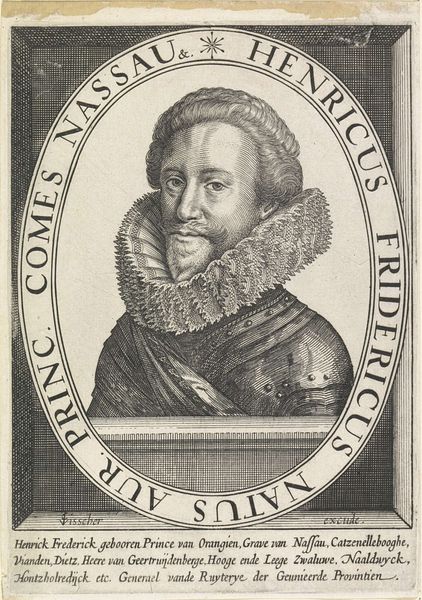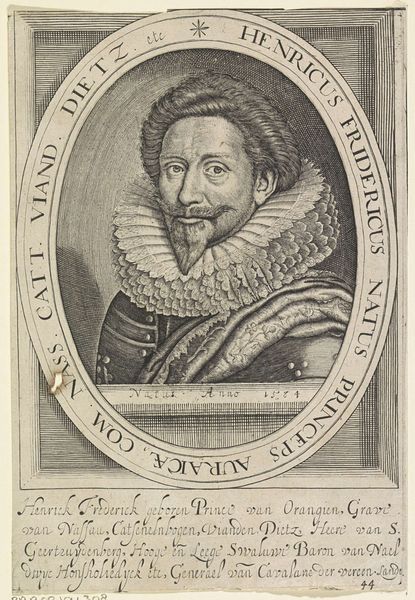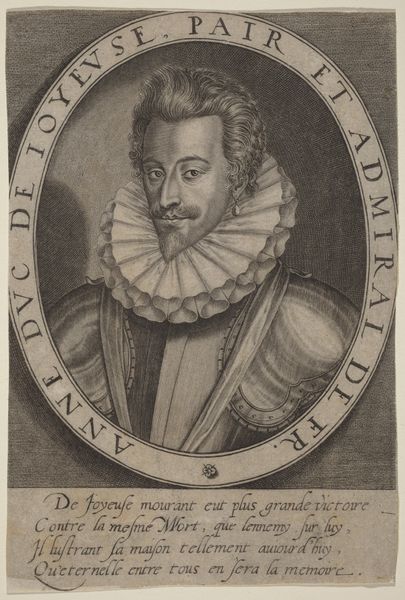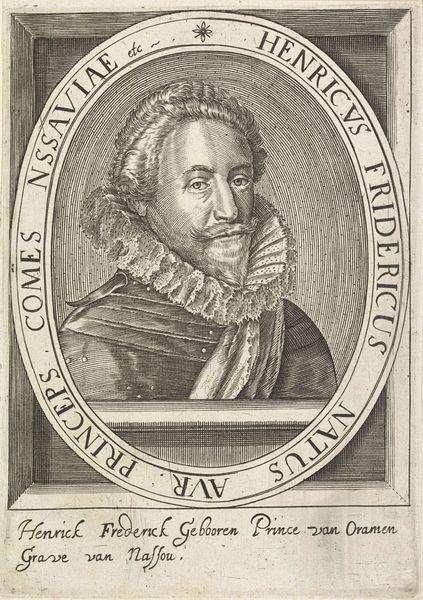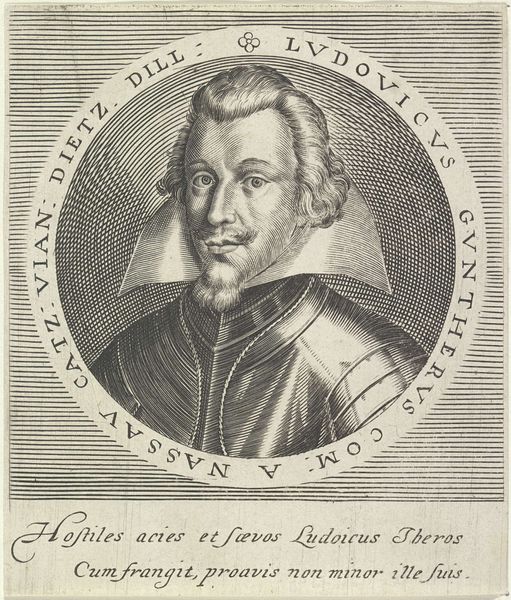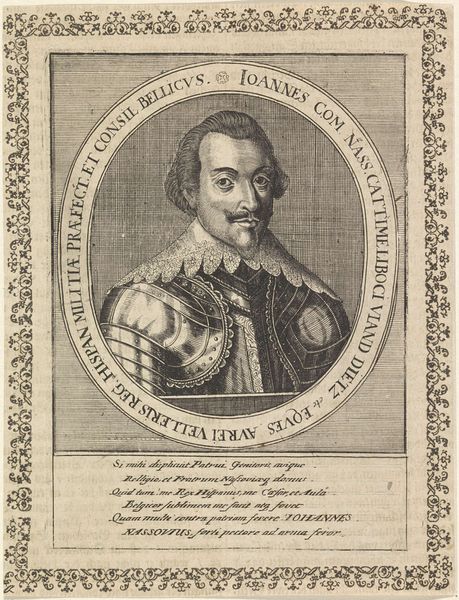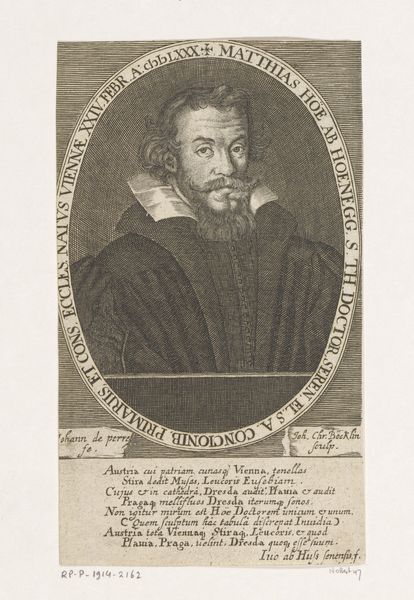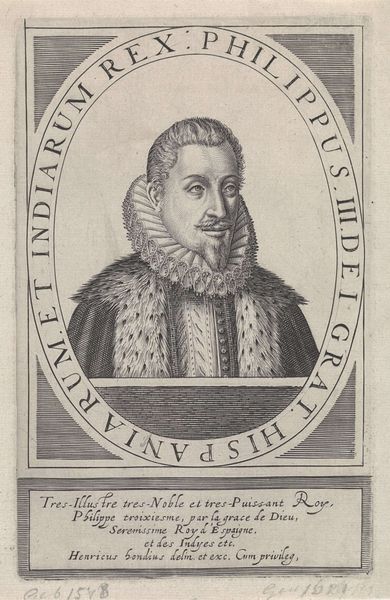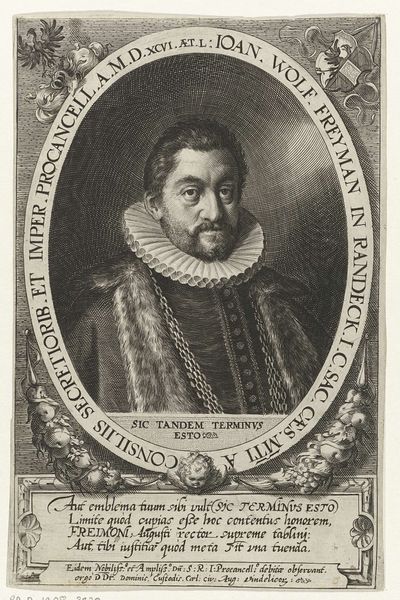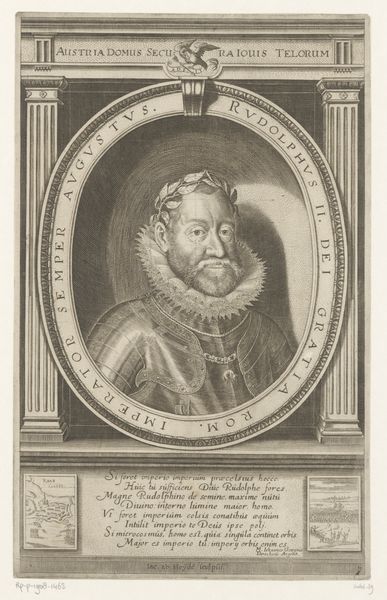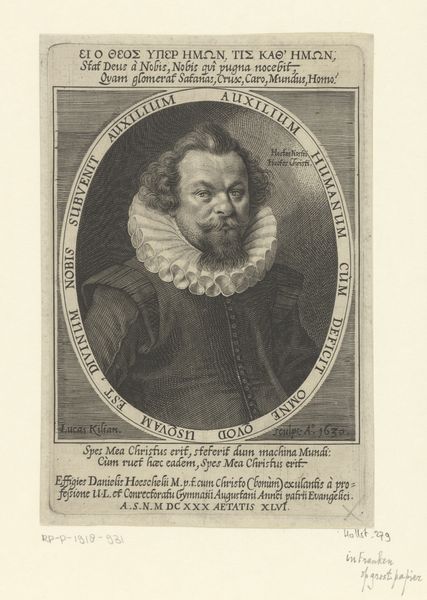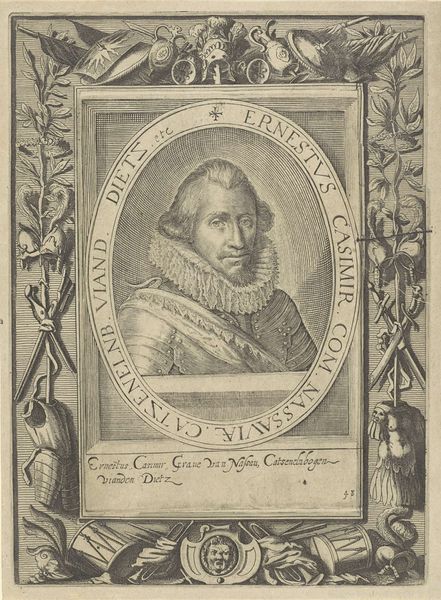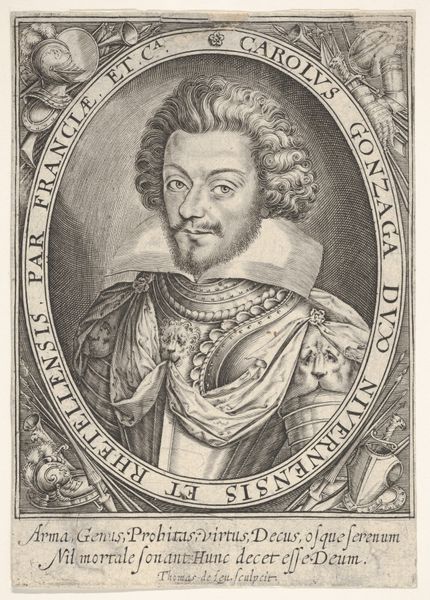
Portret van Frederik Hendrik, prins van Oranje, op 25-jarige leeftijd 1608
0:00
0:00
print, engraving
#
portrait
#
baroque
#
dutch-golden-age
# print
#
engraving
Dimensions: height 192 mm, width 122 mm
Copyright: Rijks Museum: Open Domain
Editor: This is a portrait of Frederik Hendrik, Prince of Orange, at the age of 25. It’s dated 1608 and was created by Hendrick Hondius I. It looks like it’s an engraving. It seems very precise and formal; what strikes you most about it? Curator: As a materialist, I’m drawn to consider the economic and social context of printmaking during this time. Think about the labour involved in creating such an intricate engraving. Hondius meticulously cuts into a metal plate, which then allows for mass production and distribution. Editor: So you're saying it wasn’t just about making art, but about circulating an image widely? Curator: Exactly. This wasn't a unique painted portrait destined for a single wealthy patron. Engravings like this made imagery accessible to a broader audience. What statement does that accessibility make about power and social class in Dutch society at the time? Editor: So, by looking at the *how* – the materials and method – we gain insights into the *why* – the social and political impact of art? Curator: Precisely. The choice of printmaking, versus painting, positions this artwork within networks of production and distribution that were revolutionary at the time. Also, the Latin and French phrases accompanying the portrait emphasize that. Editor: I see what you mean. I hadn’t considered the printing process itself as part of the artwork's message. Now it seems clear, though, how crucial that material reality is. Curator: Indeed, analyzing the materiality reveals the underlying mechanisms that shaped artistic creation and reception.
Comments
No comments
Be the first to comment and join the conversation on the ultimate creative platform.
